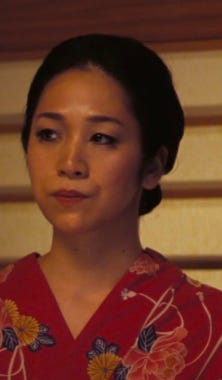Licorice Pizza Part Deux
The Women Holding the Illusion - the real cast of Licorice Pizza or What happens when a film uses archetypes as cover and a brunette as a blank slate
There’s something unsettling about Licorice Pizza, and it’s not just the age gap. It’s how the film structures its women — or more precisely, how it uses them.
Alana, the main character, is a brunette. That’s not a throwaway detail. In film and culture, brunettes carry a unique kind of ambiguity. They don’t trigger a specific archetype the way blondes, Black women, or Asian women often do. There’s no cultural shorthand for the brunette. They’re the "mystery," the enigma, the everywoman. That makes them perfect vessels for audience projection.
If Alana had been blonde, the movie would have read differently. Her unraveling would have seemed shallow. If she had been Asian, viewers might have clocked the objectification. If she had been Black, the pathology would have been called out. But as a brunette? She slides under the radar. The viewer doesn’t question her role. They relate to her. They miss the signs.
The Stereotypes Are Still There — Just Not On Her
This is where it gets eerie: those stereotypes still exist in the movie — they're just offloaded onto side characters.
The blonde woman in the bikini helps Gary sell mattresses. She doesn’t speak. She’s pure aesthetic. Sexualized and silent, she serves as wallpaper for Gary’s hustle.
The Black woman who first introduces Gary to the mattresses works under a sleazy white boss. Their dynamic reeks of exploitation. She’s hypersexualized, used as a gateway into a sleazy subplot, and then disappears.
The Asian women are treated with outright racism. The white restaurant owner fakes an accent in front of them, and the joke is on them, not him. They’re props for the punchline.
Each of these women is used to hold a stereotype — to embody it, contain it, and make it invisible. They exist so Alana doesn’t have to carry the weight of those cultural projections. Their roles reinforce the illusion that Alana is the “real” person in the movie, the one worth empathizing with. But in reality, she’s just been freed of stereotype long enough to sell the fantasy.
The Brunette as Cultural Trojan Horse
That’s the real sleight of hand. Alana is framed as complex, conflicted, cool. She’s not adorned with any heavy-handed stereotype, so the audience reads her as neutral. That neutrality allows all kinds of dysfunction to pass unnoticed.
It’s not that the movie avoids stereotypes. It distributes them.
It positions women like chess pieces, each playing a culturally legible role — except Alana. And because she isn’t easily categorized, she becomes the Trojan Horse for all the movie’s unresolved tension. The discomfort around age, power, agency, and reality slips past because it’s filtered through someone we don’t know how to label.
What We Miss When We Don’t See the Structure
This is why so many people missed the point. They felt something was off but couldn’t name it. They wanted to believe in the romance, the nostalgia. And Alana, as a brunette, gave them a vessel to do that. She became their way in.
Meanwhile, the film’s racism, sexism, and objectification were baked into the background. Not hidden — visible, but unexamined. Because that’s how illusion works. It doesn’t lie. It just doesn’t invite you to look.
Licorice Pizza Part Two: Not Just What It Shows, But How
In the first essay, I said Licorice Pizza was all style, no substance. But it’s deeper than that. It has substance — it’s just rotten. It doesn’t merely gloss over dysfunction; it restructures it into the DNA of the film.
The problem isn’t just the characters. It’s who gets to be human and who gets to be a stand-in.
That’s why the discomfort lingers. Because the movie isn’t unaware. It’s just unwilling to be honest.



